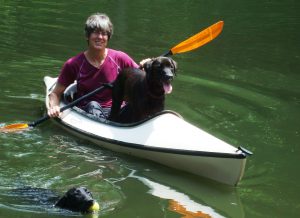The Physical Activity Guidelines Advisory Committee is composed of 17 nationally recognized experts in the fields of physical activity and health. These distinguished individuals agreed to serve on the Committee in a voluntary capacity to review current evidence and make recommendations that will help inform the next edition of the Physical Activity Guidelines for Americans. This post is part of a series of interviews with the Committee members to learn more about the men and women providing independent expertise and service to improve the health of the Nation.
Today, we are highlighting Dr. Kathy Janz, physical activity epidemiologist at the University of Iowa in the Department of Health and Human Physiology and the Department of Epidemiology. On the Committee, Dr. Janz is a member of the Youth and Exposure Subcommittees.

Explain your background in physical activity and public health.
As an undergraduate at the University of Wisconsin-Stevens Point, the home of the National Wellness Institute, I was encouraged to think of physical activity as something that was integrated in day-to-day life. My graduate work at the University of Northern Colorado was in community health and exercise physiology. Putting those two areas together gave me the theoretical basis for the health benefits of physical activity in populations
Tell me about some of your recent research.
As a professor at the University of Iowa, I work with a research program that quantifies everyday activity. We seek to understand how much physical activity is needed to predict healthy growth and development in youth and to lower disease risk in adults. My research requires making multiple physical activity measures of the same person across the years—which can be challenging. But when this design works, it provides a rich pattern of what type, how much, and when physical activity contributes to health.
Recently, I have been working with colleagues to better understand how the type and amount of physical activity that impact strong bones might differ from what is needed for a strong heart and healthy metabolism. This has meant thinking differently about activity intensity, moving from “Is it making my heart and breathing faster?” to “Is it making my muscles quickly pull on my bones?” One theme that has arisen in my research is the transient nature of the health benefits of physical activity. At first that sounds like a bad thing (i.e., all that effort goes to waste if you don’t keep doing it). I think it is important to keep in mind that you don’t need huge amounts of physical activity; it’s the everydayness that matters.
What tips would you give Americans who are trying to be more physically active?
Find a greater purpose. My partner and I have fostered and placed over 50 dogs, many of which were misbehaving in shelters due to lack of physical activity. Rain or shine, I’m outside walking with a few dogs. I believe there’s merit in the activity that is beyond the health benefits and even beyond the enjoyment. Similarly, some of my environmentally conscious colleagues actively commute to work every day, rain or shine. That is my tip to everyone trying to be more active: find something that includes movement, but that is also part of your identity. You could be an engaged parent playing with your children, a community volunteer stocking a food pantry, or a master gardener beautifying your neighborhood. As for me, I’m a dog lover; for years now my everyday activity has been walking (or kayaking or cross-country skiing or fat-tire biking) with dogs.
~
The Office of Disease Prevention and Health Promotion would like to personally thank each of the members for their dedication and service on the Committee. The Committee’s independent review of the scientific literature is the result of thousands of hours of work and will culminate with the submission of the 2018 Physical Activity Guidelines Advisory Committee Scientific Report to the Secretary of the Department of Health and Human Services (HHS). HHS will use the report to develop the next edition of the Physical Activity Guidelines for Americans.